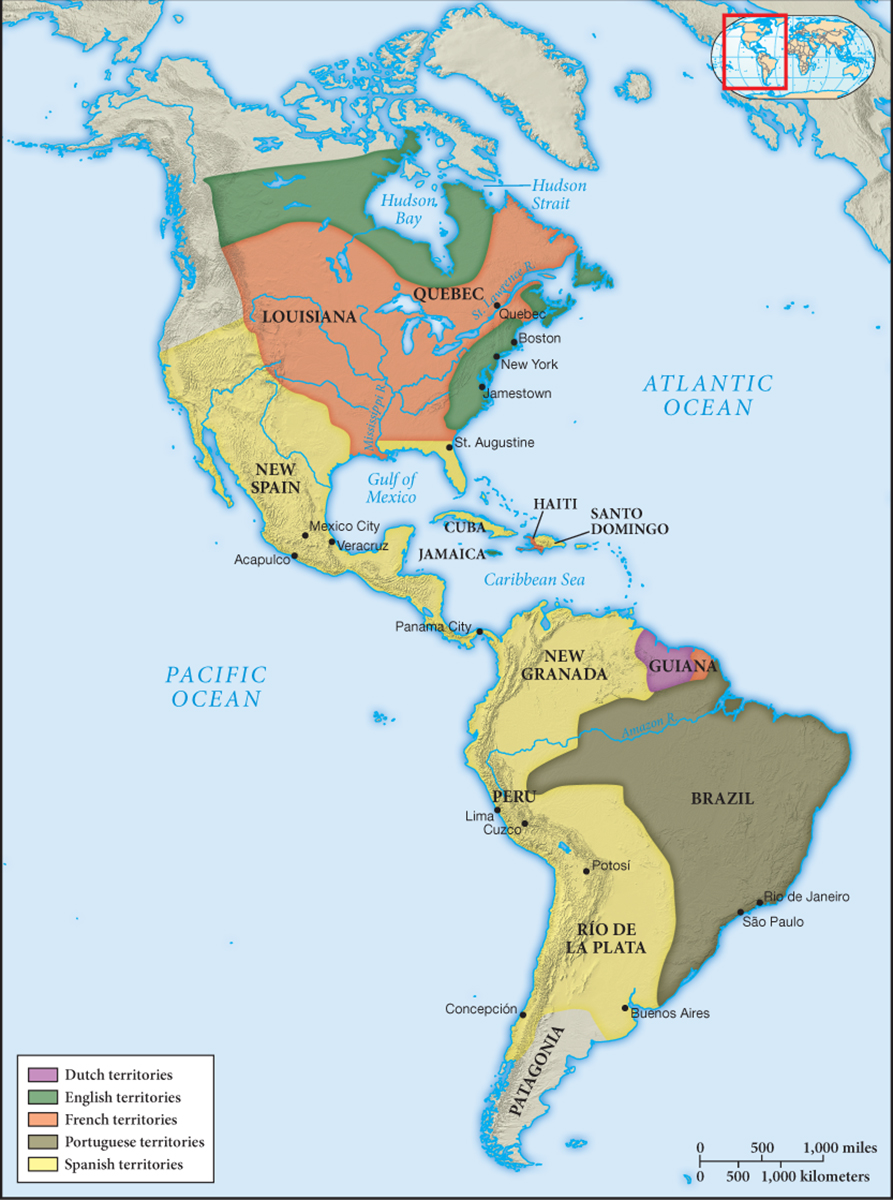Among the early modern empires, those of Western Europe were distinctive because the conquered territories lay an ocean away from the imperial heartland, rather than adjacent to it. Following the breakthrough voyages of Columbus, the Spanish focused their empire-building efforts in the Caribbean and then, in the early sixteenth century, turned to the mainland, with stunning conquests of the powerful but fragile Aztec and Inca empires. Meanwhile, the Portuguese established themselves along the coast of present-day Brazil. In the early seventeenth century, the British, French, and Dutch launched colonial settlements along the eastern coast of North America. From these beginnings, Europeans extended their empires to encompass most of the Americas, at least nominally, by the mid-eighteenth century (see Map 13.1). It was a remarkable achievement. What had made it possible?

Map 13.1 European Colonial Empires in the Americas By the beginning of the eighteenth century, European powers had laid claim to most of the Western Hemisphere. Their wars and rivalries during that century led to an expansion of Spanish and English claims, at the expense of the French.
